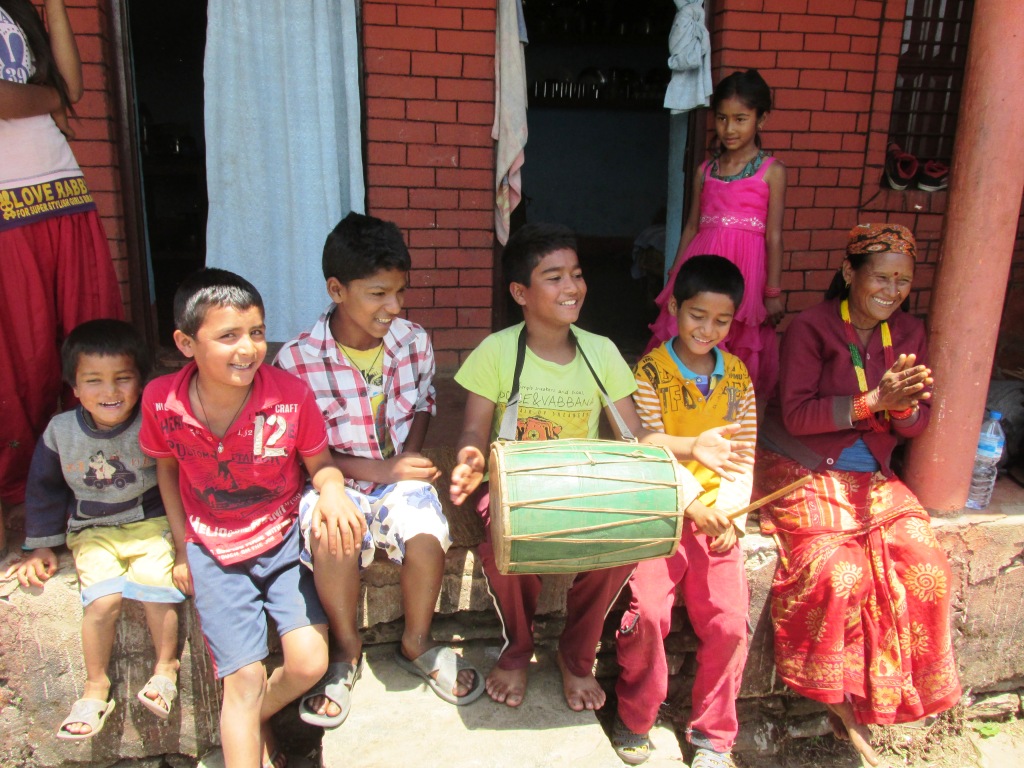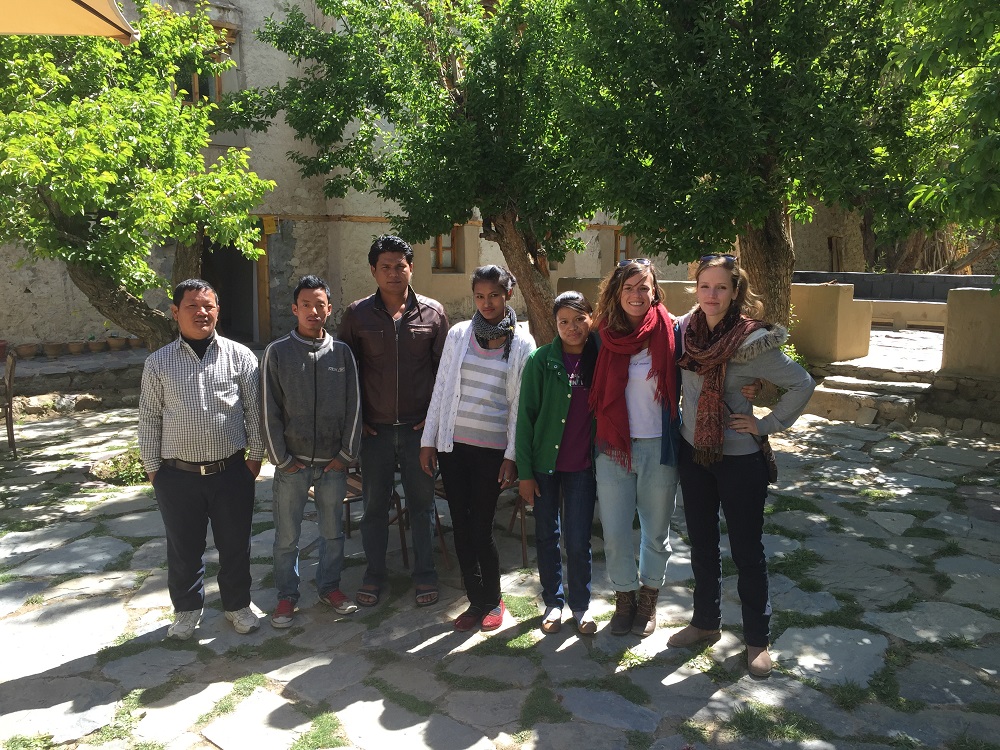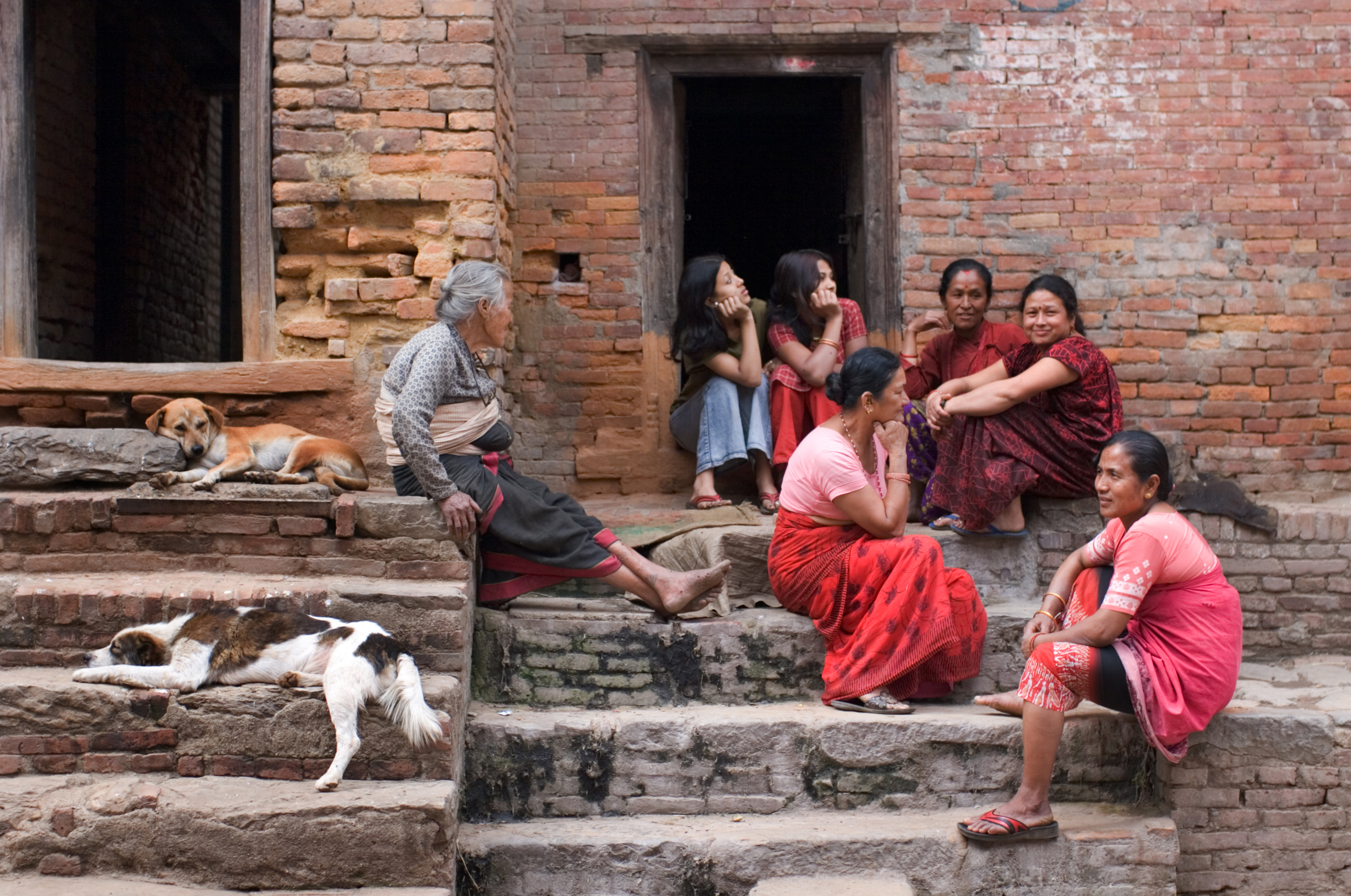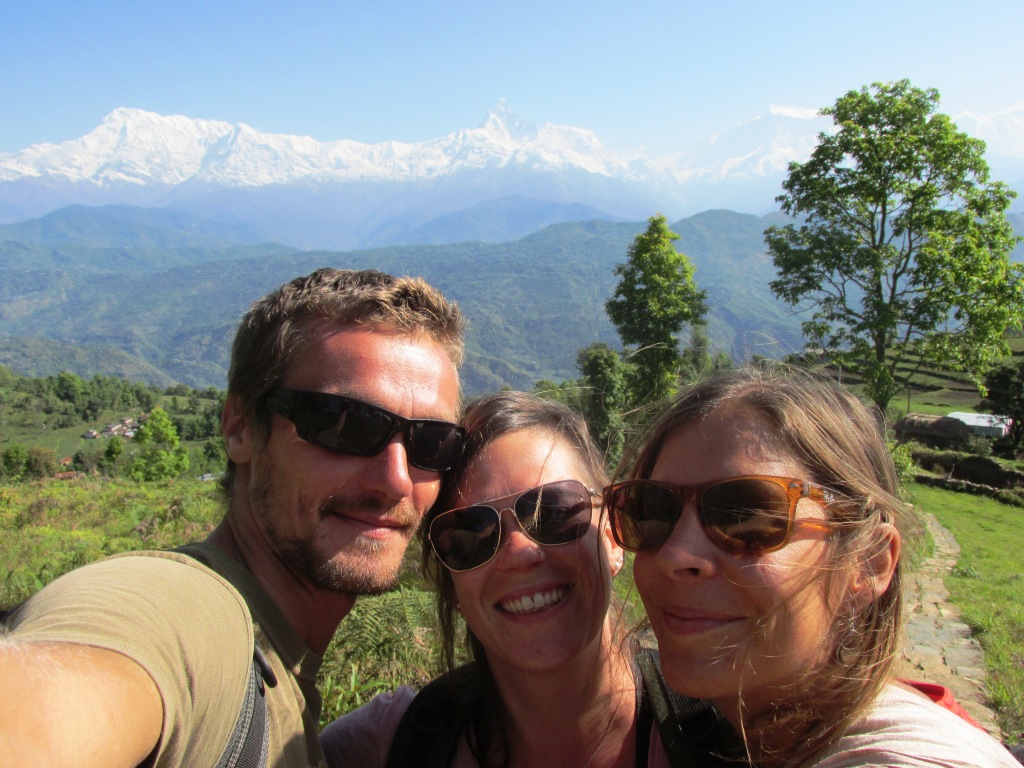Julie is our expert in the Himalayas and Nepal. On site at the time of the earthquakes in April and May, she looks back at what happened and the present situation in Nepal.
Hi Julie, can you introduce yourself and tell us about your career at SHANTI?
I’m 30 and I’m from Quebec. I felt the tug of the backpack a little more than 4 years ago. I harried Shanti so much that they hired me. I came to India for six months and I haven’t left since. I worked for 3 years at the New Delhi office. I was able to travel and gain valuable expertise in the Himalayas, Bhutan, Sikkim and Ladakh. Last year I opened our local agency in Kathmandu to enhance our knowledge on the field and to better share with you our love and passion for discovery with a big “D”.
Where were you on 25th April 2015 during the earthquake?
I was in my apartment in Kathmandu on the tenth floor. It was late in the morning and I was waiting for my taxi to pick up my friends Sophie and Francois from the airport. The earth began to move intensely. My survival instinct kicked in, and I left home and went downstairs while the earth shook. For six hours there were strong aftershocks and I stayed outside with fifty Nepalis, around 20 meters away from my building.
How did people around you react to the disaster?
The Nepalese seemed panicked but remained silent, which helped a lot. The first thing they all began to do was calling their families and loved ones who were working or living in the Kathmandu Valley or in the small surrounding villages.
I saw the spirit of brotherhood amongst everyone. I managed to reach my father on the phone in Quebec. I was constantly worried about the aftershocks. It was at that time that an old lady came up to me. She spoke little English but told me not to worry, and that it was over. It was amazing to see this lady comfort me; she had surely lost more things than I had, she had always lived there. But as it turns out, despite the lack of a common language, the feeling of human kindness remains. From that moment on I stopped thinking about myself and started thinking of others.
The Nepalese were listening to the news on their phones and I saw them laughing just 45 minutes post the earthquake. That was how I discovered the wonderful philosophy of life that animates them – they live in the present moment. It made me realize that we in the West are always trying to accomplish something, while these people simply live each day to the fullest.
Where are you now?
Until now, I was with my friends in Tashiling, one of the three villages of Tibetan refugees around Pokhara. The people there have started to make peace with this disaster. With the help of friends installed there, we are preparing to distribute bread in the villages that are affected by the earthquake but are isolated from any international aid intervention.
Today I am in Leh to prepare for the next three months which make up the peak season for the Ladakh trek.
Do you feel safe there?
Ladakh has not been affected by the earthquakes of April and May, so there is no need to worry. I know Nepal has always been a seismic risk zone, as is the case with the north of India too, but this does not prevent me from satisfying my passion for the Himalayas.
What is your advice for people wishing to help Nepal after the disaster?
For the people who are affected by the disaster and for those who have a deep affection for Nepal, the earthquake should not tarnish tourism. We must return to Nepal no matter what has happened! The Nepalese are afraid that after the extensive media coverage of the disaster, tourists no longer come to the valley of Kathmandu. But the guides, porters and drivers must keep working. Think of them and of all the people who depend directly on tourism. Although the situation is dramatic, the Nepalese continue to live. Time does not stop.
The links of the different humanitarian organizations we provide are well-managed structures in which we have full confidence. They are ever in need of donations.
But the best advice I can give to travellers who wish to help Nepal is to come back here. We’ll have to rethink some of our routes and it will take time to rebuild UNESCO sites. But that does not take away the soul of Nepal, which doesn’t lie only in its temples and historical monuments. In everyone’s minds, Nepal will remain what it is and I know that travellers will come back!
What are your latest discoveries in Nepal?
I spent a magical moment, dancing together with a Nepalese family just a week after the earthquake. I also remember a particularly moving meeting with Mayla, who housed us in his guesthouse and prepared us an excellent meal of dal bhat, all the while smiling and genuinely happy to welcome us into his home. I also discovered a new trekking route from Pokhara to add to our programs. We already offer a unique experience of living in guest houses at Tashiling, the heart of Tibetan culture. Now it is also possible to leave for a three day walk on the roads of Panchase. The first day is spent going from village to village, passing through the terraced farms. Human contact is within easy reach, and that’s what we like about Shanti. You get to share, meet and feel in harmony with nature as well as people!
On clear days, the route offers exceptional views of the Annapurna and Machhapuchhre mountains during a walk of 4-5 hours. That is why I am trying to organize an itinerary with 100% homestead, for 12 or 13 days, which would go up to the Annapurna in Kathmandu.
What advice do you give to travellers who wish to visit Nepal?
We now have a lot of coverage about what happened. I myself visited several sites that are classified as World Heritage sites by UNESCO. Out of these, presently only Langtang and a portion of the Everest camp trek are not practicable.
Otherwise, all major roads are passable. The majority of sites are still standing and can be visited! Pattan, for example, has lost only two temples out of the ten temples that include the sites that will be reopened as soon as June 15. Only Kathmandu, Bhaktapur and Swayabunath are still closed, but we will do another round-up in August.
In any case, I encourage travellers to return to Pattan and Bhaktapur for the people who still live there, and to grasp the importance of these cities in the Nepalese culture. The soul of Nepal shows up in the people who are still living in these places despite such a great disaster. Similarly, the village of Bandipur has not lost its value because of the quake. This tragic event is now part of Nepal’s history just like that of 1934. Even though it is legitimate to ask whether you should go back to these sites or not, for us the more challenging task is to convince you that the soul of Nepal is still there, in the heart of Kathmandu valley!
What are your plans for the coming months?
I will continue to take trips to Nepal from Leh, because I believe in this wonderful country, and I believe in its authenticity, beauty and wealth. More than anything, I want to continue to create routes for all those people who wish to discover the beautiful multicultural countries of Nepal, Bhutan and Tibet.














